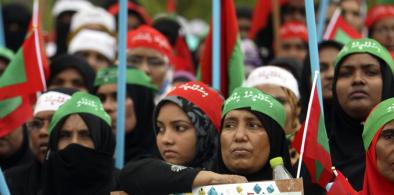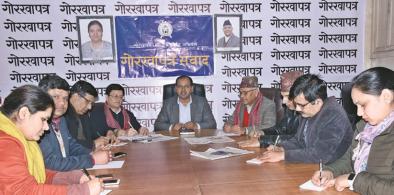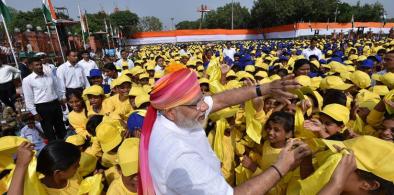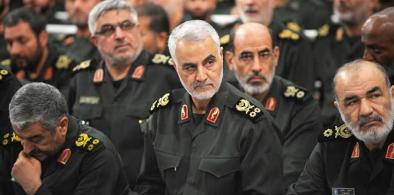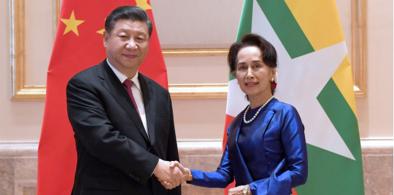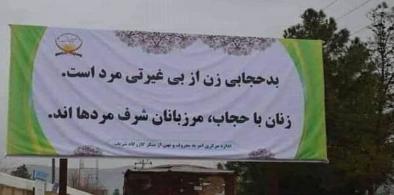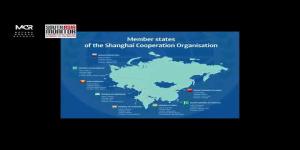What is required to be done is that all enforcement agencies, like ED, CBI and, at the state level, the police, should be completely insulated from political masters, writes Vinod Aggarwal for South Asia Monitor
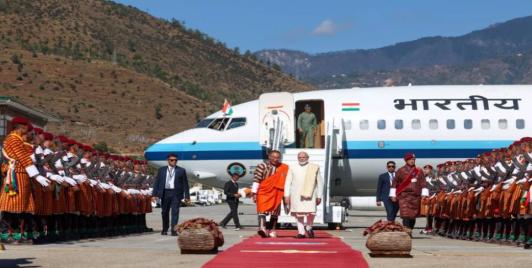
India-Bhutan Relationship Offers A Constructive Model For South Asia And A Peaceful Himalayan Region
Beyond India–Bhutan relations, the visit conveys a wider message to South Asia: cooperation grounded in respect, development, and stability remains essential in an uncertain global environment. As the region evolves, India appears to recognize the importance of maintaining strong partnerships without pressuring smaller neighbors or escalating strategic competition.
Red Fort Blast: India Facing A New Form Of Jihad?
The involvement of four doctors, one of whom allegedly executed the Red Fort blast, indicates a model that blends 'inspired' radicalisation with limited external facilitation. Interactions with certain outfits, Kashmiri terror commanders, and external handlers—if confirmed—point to an infrastructure that encourages attacks while maintaining plausible deniability.
The Nuclear Reckoning: Moment Of Awakening For India
It is time for India, along with like-minded nations across Asia, Africa, and Latin America, to articulate a shared agenda of non-alignment 2.0, not as a posture of neutrality but as a strategy of autonomy. The original Non-Aligned Movement (NAM) emerged from the Cold War’s bipolar tension; its modern counterpart must respond to multipolar volatility.
Endangered Indigenous Languages of South Asia: With Dominant Languages Replacing Mother Tongue, Are They Doomed To Die?
The world over, as is evident from the Atlas of endangered languages, there is a thrust of the dominant languages taking a precedence and most of the endangered languages are likely to disappear by 2100. Soon, possibly in the near future, the grand and great grand-children of the present generation may not be able to tell the story of their own mother tongue. Some of these languages will be lost forever and will only be limited to the pages of gazetteers and history books.
India must help curb rising Islamic extremism in the Maldives
Increasing Islamic radicalisation and the influence of Pakistan and China in the island nation may be troublesome and India must adopt necessary measures to counter their influence at the earliest, writes Jai Kumar Verma for South Asia Monitor
Can India fulfil its commitment on Iran's Chabahar port?
The enhanced allocation of resources serves as a signal to both Iran and Afghanistan that India is ready to walk the talk and hasten the completion of the project, especially at a time when the almost complete Gwadar port in Pakistan received its first container shipment, in mid-January, writes Nilova Roy Chaudhury for South Asia Monitor
Will the Trump visit heal fissures in the Indo-US strategic relationship?
The US-India relationship has a number of contentious issues, trade being the most important of them, writes Pranay Kumar Shome for South Asia Monitor
Can Nepal’s domestic laws prevail over an IPR Compact with US corporation MCC?
The MCC, which has approved 37 compacts for 29 countries since its inception in 2004, could extend a claim on products originating or produced from Nepal, which would unfortunately lose its sovereign rights over certain products which have their origin in Nepal, write Jivesh Jha and Nil Prasad Paneru for South Asia Monitor
Is India’s populist surge a threat to liberal democracy?
The success of Modi’s populist campaigns in 2014 and 2019 Lok Sabha elections, followed by the majoritarian mobilizations and lurking use of repression, pose a serious threat to liberal democracy in India, writes L T Om Prakash for South Asia Monitor
A battle for India's soul
With Delhi assembly elections set for February 8, the battle lines are sharply drawn between two pitting ideologies that have polarised national discourse like at no time before, writes Tarun Basu for South Asia Monitor
Soleimani’s killing has only helped Islamic State, will threaten South Asian security
The re-emergence of IS would have a definite impact on the Af-Pak region, with its consequential fallout for India and regional peace and stability in South Asia, writes Brig Anil Gupta (retd) for South Asia Monitor
Shaheen Bagh protests: A unique civil society movement led by women
What makes the Shaheen Bagh rare in the history of Indian civil society movements is that this is the first-time Muslim women are leading a protest against a law passed by the state, writes Alakh Ranjan for South Asia Monitor
CAA will deepen perception of an India unfriendly to Muslims
It is widely believed that India’s decision on CAA would ‘question the principle of equality before the law’ and emotionally impact the Muslim community of both India and its neighbouring countries, writes Sukanya Bali for South Asia Monitor
Challenging times for Indian foreign policy as new foreign secretary takes charge
Shringla, who came in from Washington where he served as India’s ambassador, will have his work cut out, writes Nilova Roy Chaudhury for South Asia Monitor
Will China’s strategic embrace of Myanmar spell more trouble for Rohingyas?
The strategic gameplan of support to the Rohingya militancy is clearly visible. One, for China, making them into militants can be used to destabilize many countries, including India in South Asia, thus weakening its economic competitors, writes Swadesh Roy for South Asia Monitor
South Asian countries must formulate legal frameworks to control marine litter
In South Asia, the issue of marine litter management is not taken as a priority by any of the nations, write Harsh Mahaseth and Shubham Sharma for South Asia Monitor
Religious extremism taking hold in Afghanistan as Taliban influence spreads
Salafist movements, such as Hizb ut-Tahrir and the Jamiat-E Eslah, while opposing Taliban methods, are generally the same, and these movements, consciously or unconsciously, pave the way for Taliban recruitment in Afghanistan, Writes Saleem Payenda for South Asia Monitor
Vulnerable communities in Bangladesh to be worst hit by climate crisis
Bangladesh and Maldives, amongst others, are the most afflicted and vulnerable victims of environmental pollution and climate change, Write Akmal Hossain for South Asia Monitor







